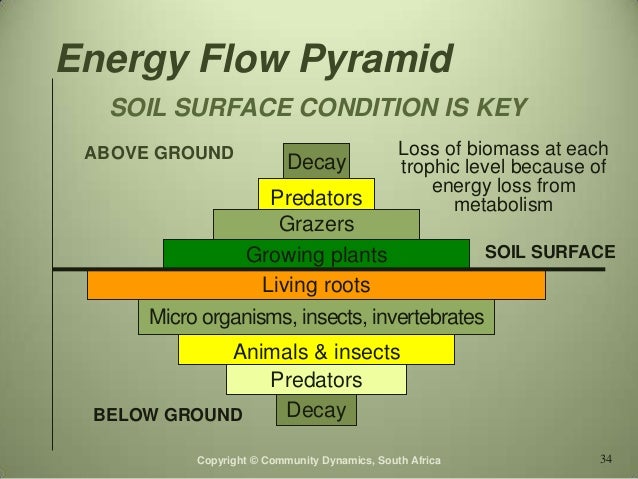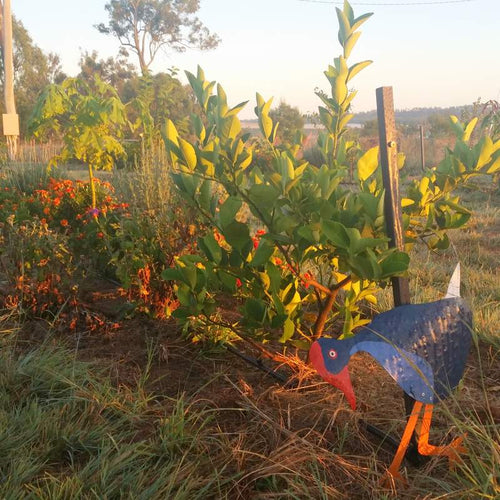Holistic management - part 4: ecosystem processes
The book Holistic Management: A New Framework for Decision Making (affiliate link) sets out a guide to developing a holistic goal for your farm or business.
Holistic management considers four fundamental and interelated processes that function within our ecosystem/environment:
- Water cycle
- Mineral cycle
- Energy cycle
- Community dynamics
These processes are the foundation on which we can build our holistic goals. The holistic goal should be formulated around how we want to influence these processes, as any improvement in one will result in an overall improvement in productivity of the land. I will use this post to discuss the processes and further develop the holistic goal that I drafted previously.
Water Cycle
Most of us would have learnt about the water cycle in school. Water is evaporated from water bodies and land, it forms clouds, which result in rain or precipitation (including snow). This then flows through creeks and rivers (and underground) to the sea. The important concept here is that all water is eventually going to move under gravity towards the sea, but we want to get as much use out of that water as possible, and the most efficient way to do that is to hold water in our soil, but no so much that we have waterlogging. An effective water cycle is one that keeps the right amount of water in the soil, with enough catchment and enough drainage.
I know that we can sometimes have 50 mm of rain and I can dig in my garden and find that only the surface is wet. We have erosion on our property from water run-off during high rainfall events. Although we do catch water in dams, it would be more effective in our soil. Most of that rain has run off, and that is not an effective water cycle. That just results in floods and droughts. The things that help the soil to absorb water are ground cover, organic matter content, aeration and drainage. Bare soil tends to form an impermeable layer that does not allow water to soak into the soil. This is part of the reason why we are trying to develop a perennial pasture rather than cultivating our soil regularly, as that constant cover will help create an effective water cycle. Management practices such as tilling, fire, overgrazing, undergrazing and extensive use of herbicides will all reduce ground cover and therefore create an ineffective water cycle.
Holistic goal: An effective water cycle with water captured in high organic matter soil, available year-round to our pasture, and not causing erosion problems and leaching (clear silt-free dams for swimming).
Mineral Cycle
Minerals move through the environment just as water does, and most of the drivers for an effective water cycle are common to the mineral cycle. "A good mineral cycle implies a biologically active living soil, with adequate aeration and energy underground to sustain an abundance of organisms that are in continuous contact with nitrogen, oxygen and carbon from the atmosphere". The key word is living - microbes are part of the cycle, fertilisers and chemicals that kill microbes also destroy the mineral cycle and microbes need biological matter from plants. Therefore bare ground will not support an effective mineral cycle. In addition, plants are the main agents for bringing minerals to the surface. For those minerals to continue in the cycle, they must be decomposed by microbes.
Some minerals come from decomposing rock, others from the atmosphere via rain. Like the water cycle, the most effective mineral cycle will keep minerals in the system as long as possible and avoid problems like leaching and run-off of minerals. Fire and oxidation will also cause many minerals to be lost as gases rather than incorporated in soil. In brittle environments, infrequent rainfall reduces the tendency of trees to rot and dead trees can stand for decades (we have a few on our property, and while they make great bird nesting trees, they are not currently contributing to the mineral cycle). This is also the case with grass that overgrows, dies off in winter (becoming unpalatable) and then inhibits the growth of new shoots if the grass is not trimmed short again.
Holistic goal: An effective mineral cycle, retaining minerals in the soil by encouraging microbial life and minimising leaching and run-off through optimal groundcover. (no more ploughing!)
Energy Flow
"The natural living world runs on solar power and our management decisions drastically affect how much is captured and put to use". This is the only process that is not a cycle, but rather a one-way flow of energy from the sun, via plants, to create the carbohydrates that sustain all living things, from microbes to humans. This is described by the energy pyramid shown below. The only ways to increase the amount of energy flow to a property is 1) encourage growth of more solar-converting plants or 2) external input of fossil fuels. From a sustainability and input cost perspective, the first option is preferable. Biomass can be increased by increasing plant density and/or the size of the leaves.
Holistic goal: Long growth seasons and high growth rates, maximum vegetation coverage, and therefore, high energy flow - through effective water and mineral cycles and biodiversity.
 |
| image source: http://www.ianmitchell-innes.com/ |
Community Dynamics
Communities of living things are always dynamic, from establishment to a stable population, they change constantly in response to external influences. We cannot begin to understand the complex dynamics of the communities on our property. From the billions of microbes in the soil, to the insects, small animals, various plants and our introduced farm animals. They all work together to make the other processes - water cycle, mineral cycle and energy flow - happen on small and large scales. This chapter covers several concepts, which I will attempt to summarise. Many are similar to permaculture principles.
- There are no hardy species - every species is adapted to specific conditions.
- Non-native species have their place - while some non-natives can cause a lot of damage, some can be beneficial. Especially considering that some ground cover is better than none, its more effective to keep non-native weeds than to spray them and have nothing. This reminds me of Peter Andrew's work where he slashed weeds to improve the mineral cycle, rather than spraying them.
- Stability tends to increase with increasing complexity - this includes species at all levels, and means that established and diverse communities are less like to experience plagues or or one species taking over completely, as they naturally balance each other.
- Most of nature's wholes function at the community level - members of any one species exist as part of a community, not as a separate population (one of the problems with the way we try to "save" certain species but forget the overall environment that they live in).
- Most biological activity occurs underground - the soil beneath a healthy pasture may contain double the weight of microbe below ground as cattle above ground. This biological activity also includes plant roots, which are continually exuding chemicals to feed microbes. This is why we need to value soil as an extension of the biological system that we can see above ground.
- Change generally occurs in successional stages - this is related to the first point. Biological communities will tend to progress as the conditions become suitable for different species. For example, grass and weeds growing on bare ground create an environment that supports small shrubs and gradually trees then shade out the grass. This concept is used widely in permaculture design. In brittle environments succession may be slow or non-existent, as the conditions for the next level of species are never achieved.
How to use a knowledge of community dynamics - generally in farming we want to encourage one species of farm animal or crop to thrive, however by developing monocultures we ignore many of the concepts discussed above and create difficulties such as pests and diseases that just require more work. Alan says "In seeking to increase or to decrease certain species, you must not fall in the trap of seeking a monoculture of whatever plant appears most beneficial". Understanding the dynamic communities on our property and managing them using the concepts above will be critical to achieving our holistic goal. For example we have a species of grass called African Love Grass (ALG), which is considered a weed and most farmers will spray or burn it, with little success in eradicating the grass. It is low protein, but cattle will eat it when its short and green. Importantly, we have observed that when we increase soil fertility, other more desirable grasses will take over (succeed) from the ALG. Our management technique is therefore, keep the grass short and desirable to cattle, improve soil fertility to that other grasses can thrive and succeed.
Holistic goal: Biodiversity in natural and farmed plants and animals for maximum resilience and stability. Harness succession principles to develop productive palatable perennial pastures without the use of chemicals, fire or excessive mechanical intervention (the goal is not supposed to include "how", but I don't want to lose that sentence, it might end up in the plan somewhere else)
What do you think? How do you think the water and mineral cycles, the energy flow and community dynamics are functioning on your property? How do you (or will you) work to improve these processes?
Other posts in the series:
Joel Salatin's books
Peter Andrew's books on Natural Sequence Farming
Permaculture Principles





















Leave a comment